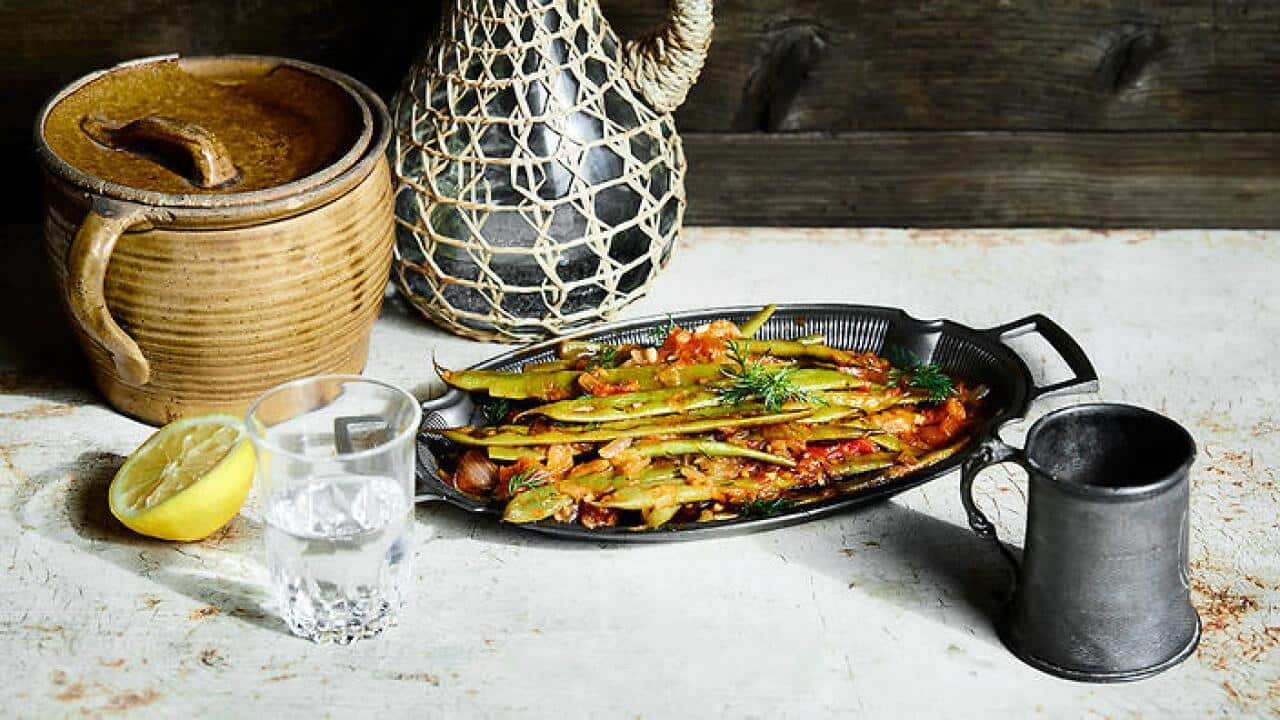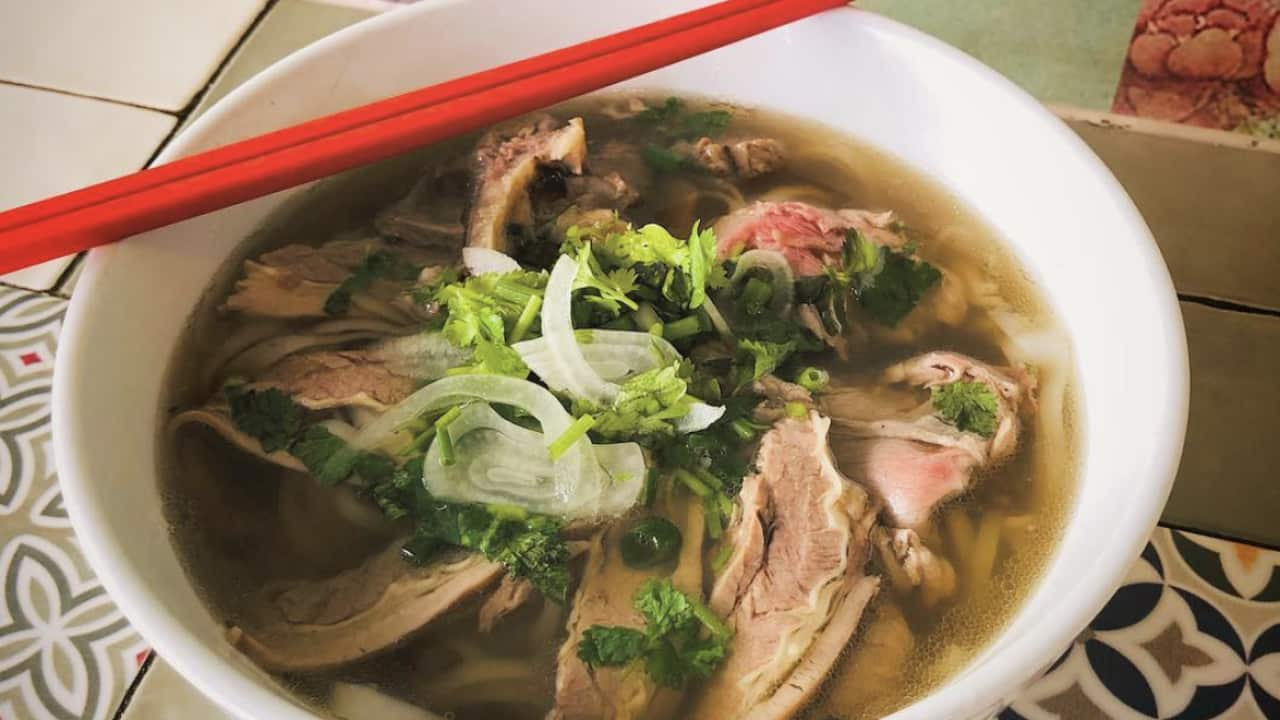Imagine a pot big enough to make 40 servings of pho, and inside 20 litres of cá nục kho, a crimson-caramel coloured stew peppered by chunks of mackerel, whole chillies and garlic. A stew that smells simultaneously sweet, savoury, rich and pungent in the most Vietnamese way - a smell you can only get by cooking something for the best part of a day.
Unless it's been served to you in a Vietnamese home, it's unlikely you'll ever come across it.
When Bac Cang Nghieu was 12, she saw this every week. It was around the mid to late 1950s, her father owned a wholesale fish sauce company and their suppliers would gift Nghieu's family the stew-filled pots along with each of their fish sauce deliveries. Michael Thai, Nghieu's son, says, "They came from the countryside, about 3-4 hours from Saigon, an area famous for fish sauce.
"In those days, it was a lot about relationships. It was a custom to give your buyers gifts. They had a lot of suppliers but it was only the ones they had been in business for a long time [who gave the gifts]."
The Nghieu family home would, almost perpetually, be dressed in the fishy, rich smell of the stew. "In the old days, not everyone had refrigeration, that was expensive. So you would leave it out in the open, then in the morning reheat it again to kill any bacteria," says Thai, translating his mum's words. There was so much of it Nghieu would get tired of it, and try repurposing it into other dishes. "[My mum] says she would pan-fry it and put it in a banh mi. Sometimes she'd also take fish out of the stew, crush them, stir fry them with ginger, garlic and sugar and make a fish floss, like pork floss but with fish."
There was so much of it Nghieu would get tired of it, and try repurposing it into other dishes. "[My mum] says she would pan-fry it and put it in a banh mi. Sometimes she'd also take fish out of the stew, crush them, stir fry them with ginger, garlic and sugar and make a fish floss, like pork floss but with fish."

The Nghieu family home would, almost perpetually, be dressed in the fishy, rich smell of the stew. Source: Michael Thai
That was more than 60 years ago. Now, Nghieu, in her mid-70s, and her family live in Sydney. She's the owner of the several-decade-old Cabramatta institution , and that mackerel stew she'd eat every week as a kid has a very different role in her life.
When Nghieu and her family came to Sydney in 1990, all of the home foods that were a regular part of her life no longer existed - not just mackerel stew, but duck and taro, pink yam soup, tofu stew with fermented bean curd and many others. Back in Saigon, mackerel was a cheap, almost maligned food, and the mackerel stew was just an everyday meal, never a talked-about or particularly revered dish (Thai guesses this might be the reason it doesn't appear on Australian restaurants menus). Thai says, "It's only when you leave the country you learn to like a dish. When you are there, you don't appreciate it."
Back in Saigon, mackerel was a cheap, almost maligned food, and the mackerel stew was just an everyday meal, never a talked-about or particularly revered dish (Thai guesses this might be the reason it doesn't appear on Australian restaurants menus). Thai says, "It's only when you leave the country you learn to like a dish. When you are there, you don't appreciate it."

Michael Thai with his mum Bac Cang Nghieu. Source: Michael Thai
For Nghieu, the stew was a portal back to Vietnam and her youth. A reminder of her family's fish sauce business, their Saigon home, and the fish market that was just around the corner.
When we first arrived we wanted to cook our own dishes because we were homesick.
Thai says, "My grandfather's shop was just around the corner from a massive wholesale market where they would sell mackerel in bamboo steamers.
"When we first arrived we wanted to cook our own dishes because we were homesick. A lot of the days mum would work very long hours in the restaurant then on her days off she'd make this. Well, she'd cook the fish the night after her work for the next day."
For Thai, his fondest memories of eating Nghieu's version of the stew isn't from his childhood or the early years of his Australian life, but as an adult.
"There were a few periods where I worked really stressful jobs in telecommunications. The days I really felt down, my mum would pick up on that. The next day I would come home to a fish stew. It was unspoken, she would just cook it to cheer me up.
"That was my comfort food. [My sisters and I] would always ask if she could cook a bit more next time, we'd go through it quickly and take containers home."
Nghieu's chilli mackerel stew
Makes 6-8 servings
Ingredients
- 2 kg fresh Mackerels (cleaned and descaled, mackerel is crucial for slow cooking, other fishes might become tough and harden after several hours of cooking)
- 3 tbsp of canola oil or another flavourless cooking oil
- 200 ml of fish sauce
- 250 g of sugar
- 2 bulbs of garlic peeled
- 6 medium-size whole chillies (add more according to your preference)
- 1 tsp of dark soy sauce
- 600 ml of boiling water
1. place all ingredients except the boiling water in a casserole pot, (there is no need to preheat the pot nor the oil and garlic) and cook over high heat until the sugar starts to dissolve and the fish sauce starts to boil.
2. Add in the 600ml of boiling water to the pot and turn the heat down to medium. It is vital you add boiling water and not cold or even warm water, as the heat of the water is crucial in reducing more unpleasant fishy tastes.
3. Bring to the boil and simmer. Spoon out any foam that forms on the surface, continue doing so until all the foam stops forming, about 5 to 10 minute.
4. Turn the heat down to low, place a sheet of baking paper over the surface of the pot, and let it slow-cook for two hours or more. (The baking paper cover keeps the surface from drying out and can be used to gently press the fish down so that it submerges in the liquid while cooking)
5. When it's ready, serve over rice.
Note: if you cook it longer than two hours (Nghieu would cook hers until the fish bones were soft enough to eat, around 4-5 hours), you will likely need to add more water to prevent the sauce from drying out; there should always be enough sauce to cover the surface of the mackerel.
Photographs by Michael Thai

















